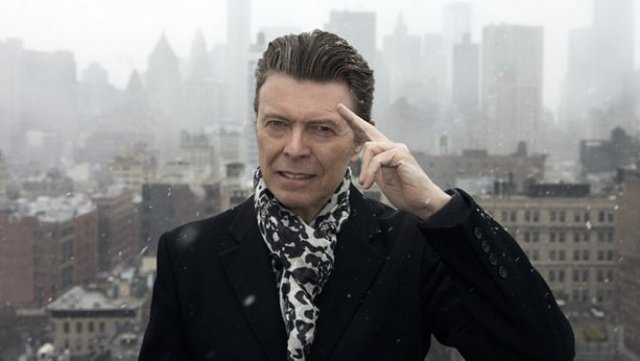 David Bowie in New York City, photo by Jimmy King/HBO (for David Bowie: The Last Five Years)
David Bowie in New York City, photo by Jimmy King/HBO (for David Bowie: The Last Five Years)
Performer David Bowie, a longtime resident of New York City, passed away on Sunday after an 18-month battle with cancer. Born in London in 1947, Bowie calls New York City the place he “had fantasized over since my teens.” In a look back, here are 5 iconic Bowie moments and locations which show his passion for New York as a city, as well as tributes to him following his death.
1. Elephant Man at The Booth Theatre, 1980
After two decades of pioneering music working with people as varied as Luther Vandross, John Lennon and Iggy Pop, Bowie debuted on Broadway in the title role of The Elephant Man, playing at the Booth Theatre on 45th Street. The year was 1980, and Bowie’s song “Ashes to Ashes” was at number one on the charts in the United Kingdom.
Without makeup or prosthetics, Bowie would perform the role 157 times over the course of three months to critical acclaim. The play is based on the real life story of Joseph Merrick, known in the Victorian era for his extreme body deformities. Bowie, in an interview with French TV channel TF1 said, “It never occurred to me to even consider trying to work in the realm of straight dramatic theater. I didn’t think I was qualified, nor that I had any particularly masterful technique which would put me anywhere near a stage in a credible fashion, but he had the audacity of courage or however you might view it to put me in that position. And I met the challenge, as I am of that nature to. Tend to leap into things without really thinking, and I accepted.”
The New York Times said Bowie’s performance was “splendid.” Clive Barnes at The New York Post praised the performance as “one of the greatest acting performances” he had seen in years. The Los Angeles Times called Bowie a “born actor.”
In the TF1 interview, Bowie credits Lindsay Kemp Mime Company with enabling the realistic and believable physical performance in The Elephant Man. Bowie’s New York Times obituary also describes Lindsay Kemp as a “lasting influence on Mr. Bowie, focusing his interest in movement and artifice.”





